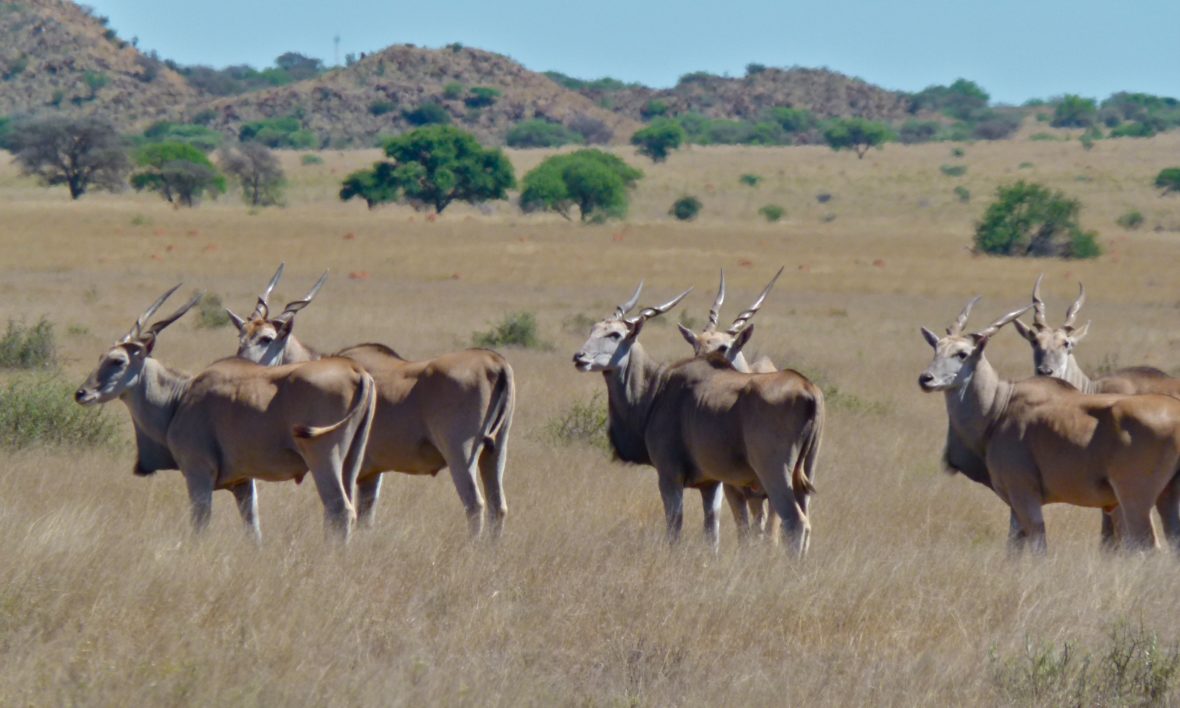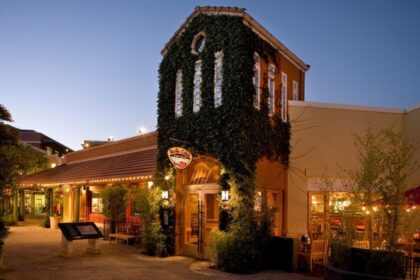Elands are herbivores that live in the grasslands of Africa. They’re distant cousins of antelopes that almost became extinct due to hunting. However, due to their recent protected status, their population numbers have recovered significantly. Take a look below for 26 more amazing and interesting facts about elands.
1. Though they’re mostly peaceful, they exhibit a range in behaviour. The males are known to compete regularly for the leadership of the herd, as well as for mating rights with females.
2. Male elands are known to go into a fit of rage where they will bring down trees so they can graze the leaves off the upper portions.
3. They have large antlers and are the biggest species of antelope found in Africa. They’re known to grow to heights of 2 meters, when measured at the shoulder, and can weigh up to 700 kilograms.
4. Despite their large size, they’re able to jump long distances and to big heights. A fully grown eland can jump up to 8 feet from a complete standstill.
5. Female elands are much smaller than the males. This makes them much more vulnerable to predators.
6. Elands have big hoogs, which is what gives them their peculiar walk.
7. Fully grown male elands have thick hair on their forehead which distinguishes them from the females. The hair grows thicker the older they get.
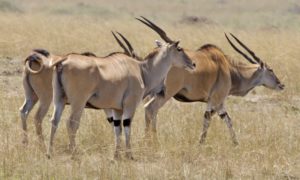
8. Their coat changes color with time and age. When they’re young, it’s tan in color. As they age it turns into a bluish-grey color. It’s also known to turn dark black in color when they get to late stages in their life.
9. Male elands have a unique feature called a “dewlap.” A dewlap is a continuous piece of loose skin that hangs from their neck and has a tuft of black hair that grows from it.
10. An elands horns can grow up to 3 feet in length. Female elands have longer horns, however, they’re much more delicate than the males.
11. They’re usually active in the morning and early evenings. This is because their habitat, Africa, can get extremely hot during the middle of the day.
12. Even though they belong to a family of sprinters, elands are a lot slower when it comes to other species of antelopes. However, they can still maintain a relatively fast trot for a long time.
13. Female elands reach sexual maturity when they turn 3 and start mating immediately. Male elands reach sexual maturity between the ages of 4 and 5.
14. They have no particular mating season but they prefer to give birth before or after a rainy season. This is because rain makes it extremely difficult for newborn elands to survive.
15. Elands usually give birth to 1 offspring per year, but twins are relatively common as well.
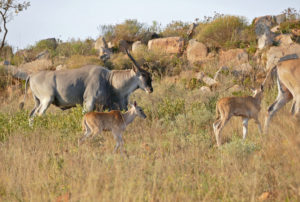
16. Calves survive entirely on their mother’s milk for 3 months, after which they are weaned.
17. Elands are very sociable animals. They live in large groups between 25 and 70 elands. In some parts of Africa, you can find herds with as many as 400 members.
18. Herds will make nurseries for all the newborn offspring. The mother and the newborn calf will stay at the nursery until the calf is 3 years old, after which they will rejoin the herd.
19. The female elands of the herd will create the nursery and will also assure its protection from predators.
20. There have been attempts by humans to domesticate ellands as their milk and meat is very nutritious, but the effort has proven to be difficult. However, some small tribes in Africa have been successful in semi-domesticating the animal.
21. The average lifespan of a wild eland in 15 to 20 years. In captivity, they’re known to live up to 25 years.
22. They have a low need for water because they produce urine with high-urea content.
23. The semi-domesticated eland require a substantial grazing area, along with salt licks and large amounts of supplementary foods like maize, sorghum, melons and beans, which can be expensive for the farmer.
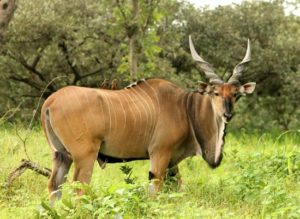
24. Female elands can produce up to 7 kilograms, or 15 pounds, of milk every day; the milk is also richer in milkfat than a cow’s milk. The milk also has a butterfat content of 11% to 17% and it can be stored for up to 8 months, if properly prepared, which is much better than the several days of storage potential for cow milk.
25. Housing elands can be difficult due to their ability jump over high fences, or to just break through them using their substantial mass and strength.
26. Elands can reproduce in captivity but the chance of the calf surviving is very low. Often, the farmers will separate the calf from their mother in order to ensure health and adequate feeding.

